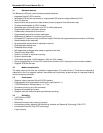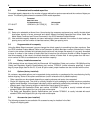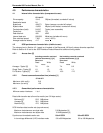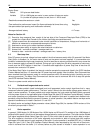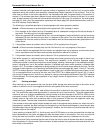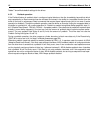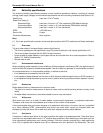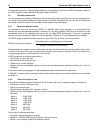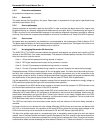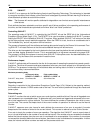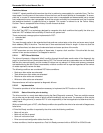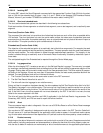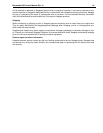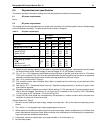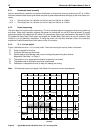
Barracuda 180 Product Manual, Rev. A 15
5.2.3 Preventive maintenance
No preventive maintenance is required.
5.2.4 Service life
The useful service life of the drive is five years. Depot repair or replacement of major parts is permitted during
the lifetime (see Section 5.2.5).
5.2.5 Service philosophy
Special equipment is required to repair the drive HDA. In order to achieve the above service life, repairs must
be performed only at a properly equipped and staffed service and repair facility. Troubleshooting and repair of
PCBs in the field is not recommended, because of the extensive diagnostic equipment required for effective
servicing. Also, there are no spare parts available for this drive. Drive warranty is voided if the HDA is opened.
5.2.6 Service tools
No special tools are required for site installation or recommended for site maintenance. Refer to Section 5.2.5.
The depot repair philosophy of the drive precludes the necessity for special tools. Field repair of the drive is not
practical since there are no user purchasable parts in the drive.
5.2.7 Hot plugging Barracuda 180 disc drives
The ANSI SPI-3 (T10/1302D) document defines the physical requirements for removal and insertion of SCSI
devices on the SCSI bus. Four cases are addressed. The cases are differentiated by the state of the SCSI bus
when the removal or insertion occurs.
Case 1 - All bus devices powered off during removal or insertion
Case 2 - RST signal asserted continuously during removal or insertion
Case 3 - Current I/O processes not allowed during insertion or removal
Case 4 - Current I/O process allowed during insertion or removal, except on the device being changed
Seagate Barracuda 180 disc drives support all four hot plugging cases. Provision should be made by the sys-
tem such that a device being inserted makes power and ground connections prior to the connection of any
device signal contact to the bus. A device being removed should maintain power and ground connections after
the disconnection of any device signal contact from the bus (see SFF-8046, SCA-2 specification).
It is the responsibility of the systems integrator to assure that no hazards from temperature, energy, voltage, or
ESD potential are presented during the hot connect/disconnect operation.
All I/O processes for the SCSI device being inserted or removed should be quiescent. All SCSI devices on the
bus should have receivers that conform to the SPI-3 standard.
If the device being hot plugged uses single-ended (SE) drivers and the bus is currently operating in low voltage
differential (LVD) mode, then all I/O processes for all devices on the bus must be completed, and the bus qui-
esced before attempting to hot plug the drive. Following the insertion of the newly installed device, the SCSI
host adapter must issue a Bus Reset, followed by a synchronous transfer negotiation. Failure to perform the
SCSI Bus Reset could result in erroneous bus operations.
The SCSI bus termination and termination power source must be external to the device being inserted or
removed.
End users should not mix devices with high voltage differential (HVD) drivers and receivers and devices with
SE, LVD, or multimode drivers and receivers on the same SCSI bus since the common mode voltages in the
HVD environment may not be controlled to safe levels for SE and LVD devices (see ANSI SPI-3).
The disc drive spindle must come to a complete stop prior to completely removing the drive from the cabinet
chassis. Use of the Stop Spindle command or partial withdrawal of the drive, enough to be disconnected from
the power source, prior to removal are methods for insuring that this requirement is met. During drive insertion,
care should be taken to avoid exceeding the limits stated in Section 6.4.4, “Shock and vibration” in this manual.



